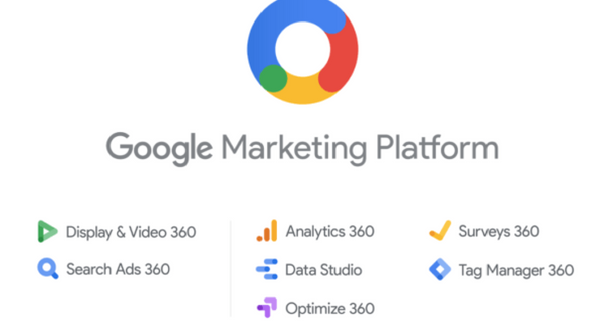The Google Marketing Platform and Other Big Changes From the Big G
Big news from the big hitters in digital marketing this week. Google announced a number of changes with serious implications for agencies, clients, and existing providers of integrated digital marketing platforms.
So what’s happening?
First and foremost, Google announced their new Google Marketing Platform in a blog post this week. The move combines the major media (DoubleClick Digital Marketing) and analytics (Analytics 360 Suite) platforms and brings them under one unified umbrella. This will allow digital marketers to be able to plan, measure, and optimize digital marketing efforts within a single platform. The complete suite of tools will include the core of the Google product offering: Display and Video ads, Search ads, and Analytics. In addition, Google’s tools for tag management (Google Tag Manager), landing page optimization (Google Optimize), data visualization (Google Data Studio), and customer surveys (Google Surveys) will allow be accessible within the comprehensive marketing platform. The implication for bringing insights and actions closer together is faster, smarter, and more responsive marketing that can evolve and improve over time.
Name changes to know: DoubleClick Search will now be Search Ads 360. Display & Video 360 will be the new name for the platform that has the combined functionality of DoubleClick Bid Manager, Campaign Manager, Studio and Audience Center. Here’s a link to a comprehensive recap from LunaMetrics on the news.
The second news announcement from Google this week was related to the the biggest platform in digital advertising: Google AdWords. Effective July 24, 2018, AdWords will be known as Google Ads, complete with a snazzy new logo.
Google says this name change is designed to catch up with how the AdWords product has evolved over time. When Google AdWords was first launched on October 23 of 2000 (with only 350 advertisers on the platform!), it only provided for Search text ads. Since that time AdWords has evolved to include Display ads, Shopping ads, and Video ads, which isn’t the most intuitive product offering for a platform with “Words” featuring so prominently in the name. This is the grand daddy of the Google ecosystem, and drove the majority of the $95.4 billion of advertising revenue in 2017.
As part of the change, Google is launching something called “Smart Campaigns” which will be the default advertising mode for small business advertisers. Google says this will use machine learning to automatically optimize ad components (copy, images, and targeting settings) to drive conversion actions like phone calls, visits, or purchases. The details remain to be seen, but it seems as though these Smart Campaigns will effectively replace the AdWords Express campaigns that were available for smaller budget advertisers who didn’t want to invest much time in managing their own advertising campaigns.
This move coincides with Google shutting down the legacy AdWords interface and forcing all advertisers to use the platform that has been rolling out over approximately the last year.
The third big change from Google is that Chrome will begin to identify non-HTTPS sites as “not secure” beginning in July. Search Engine Land published a detailed overview earlier this week. The short version is that this move will coincide with the release of a new version of Chrome (Chrome 68) and is the final push of an ongoing Google campaign to encourage webmasters to move away from non-secure sites. Today, 81 of the top 100 sites on the web are HTTPS by default and that number is sure to rise with this change.
Google had already hinted that there were SEO implications for HTTPS sites and with this change, the hinting is no longer subtle. We foresee a lot of HTTP to HTTPS migrations in the near future. For WordPress sites, we recommend checking out the Really Simple SSL plugin. It’s what we used on this site and it really can make the entire process quite simple!
At Root and Branch, We believe that businesses of any size can use and benefit from SEO, paid search, and the additional tools and platforms that Google provides. Internet search, including both SEO and PPC, provides the opportunity to connect with prospects while they’re searching and answer the critical questions that those people are asking.
Are you ready to begin your search advertising journey but aren’t sure where to start? Root and Branch believes that most strong digital marketing plans are supproted by a solid SEO foundation. Our free SEO audit is a good place to get rolling. If we can help with your SEO approach or anything related to digital marketing, you can check out our reviews here or connect with us here.
Root and Branch is a boutique digital marketing agency based in Pittsburgh that provides a wide variety of digital advertising and analytics services for B2C and B2B companies. Root and Branch is a certified Google Partner agency and provides paid search (PPC), SEO, digital reputation management, digital display advertising, digital analytics, social media management and social media paid advertising, and content creation.





Leave a Reply
Want to join the discussion?Feel free to contribute!